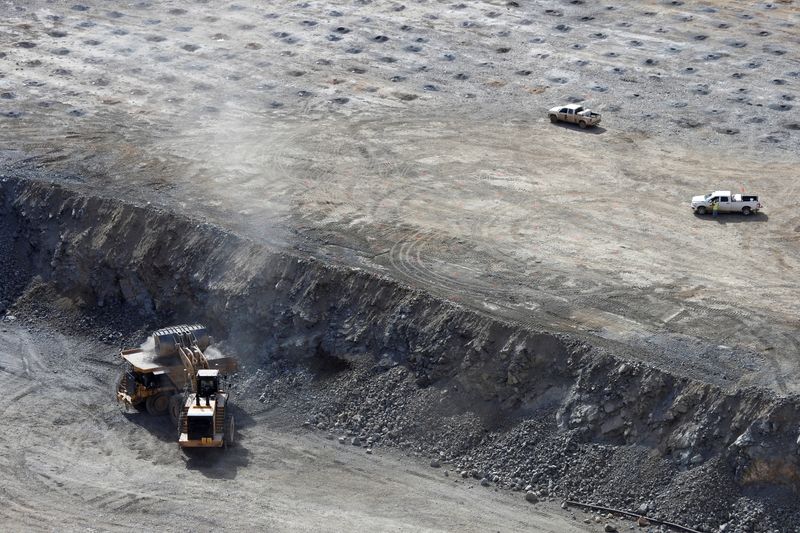(Reuters) - MP Materials and other Western companies are seeking to develop supplies of processed rare earths needed for the green energy revolution in a sector dominated by China.
The 17 silvery-white rare earth minerals are not uncommon in the earth's crust. But deposits that are economically viable are more difficult to find, and the real rarity comes in the complex process to separate them into the materials needed to produce permanent magnets used in a range of critical products.
China accounts for about 60% of global rare earth mine production, but its share jumps to 85%-90% of processed rare earths and magnet output.
There are only five non-Chinese rare earth refineries in operation, construction or re-commissioning, according to Goldman Sachs (NYSE:GS).
Below are the complex steps that rare earths must take to end up as magnets used in electric vehicles and wind turbines -- the two main areas driving demand in coming years.
MINE
Ore is first extracted from an open pit or underground mine, crushed and moved to a plant, usually near to the mine site.
The ore contains a small percentage of rare earths, but other minerals are removed through flotation, magnetic or electrostatic processing to produce a mixed rare earth concentrate that often contains 60% to 70% rare earths.
Other operations produce a rare earth concentrate as a byproduct of mining waste or from other metals such as mineral sands or iron ore.
RADIOACTIVITY
Certain types of ore, such as monazite, have to undergo another step to remove radioactive thorium or uranium from the ore, often using acid.
SEPARATION
One of the most difficult steps is separating the individual rare earths from each other. The technology was first developed after World War II in U.S. government research laboratories.
Separation can be accomplished using ion-exchange technology. It can also be done using solvents such as ammonia, hydrochloric acids and sulphates, although some such chemicals produce toxic wastes that can cause cancer.
So-called light and heavy rare earths must go through different separation circuits where individual rare earths are extracted.
New more environmentally friendly technologies are being developed, but they are not yet widely used.
METALS/ALLOYS
Separated rare earth oxides or carbonates are then refined into rare earth metals.
The most widely used permanent magnets combine rare earths neodymium and praseodymium together with iron and boron, which are put in an vacuum induction furnace to form an alloy. Small amounts of rare earths dysprosium and terbium are often added to create more heat resistance in the magnet.
MAGNETS
The alloy ingots are broken down and jet-milled in a nitrogen and argon atmosphere to micron-sized powder, which goes through a high-temperature and pressure process called "sintering" before being pressed into magnets.
